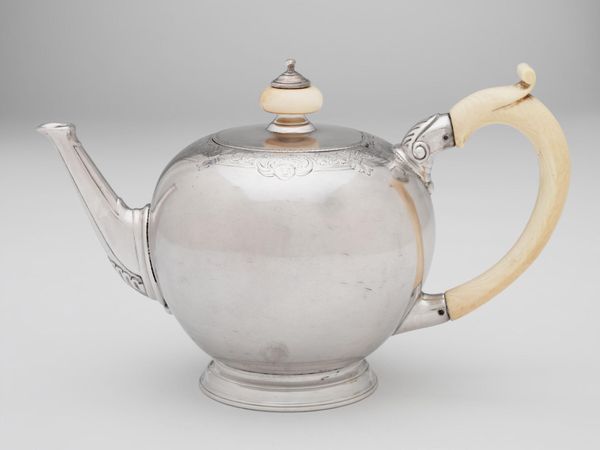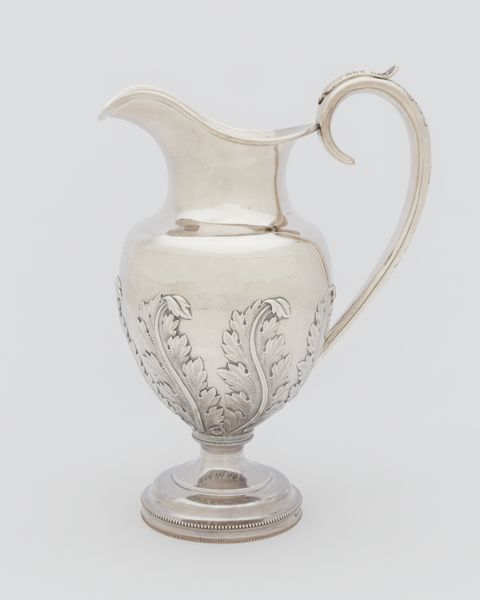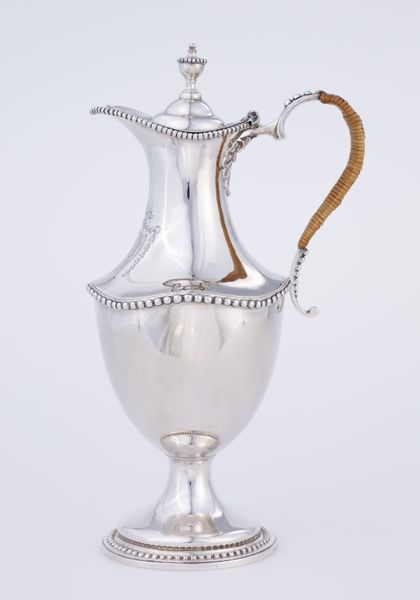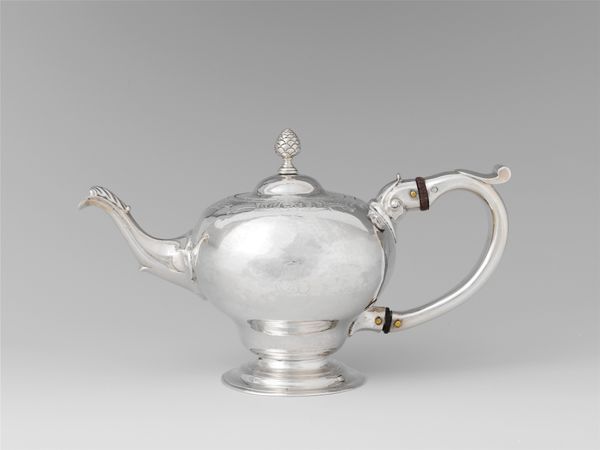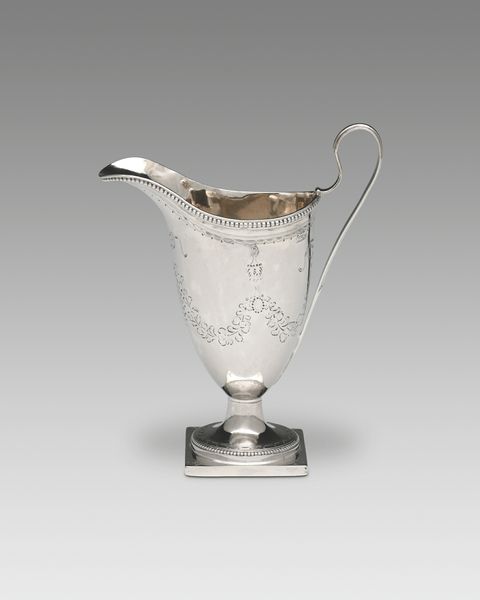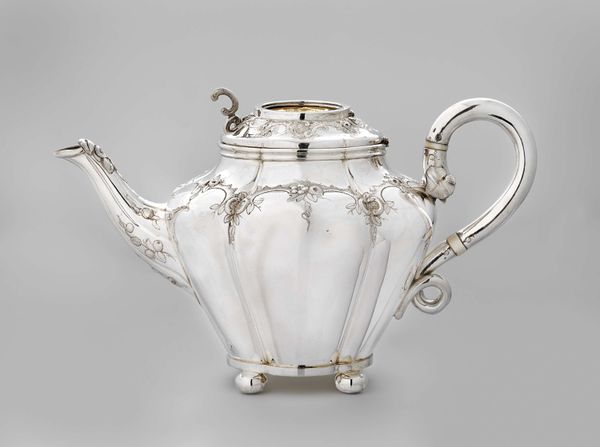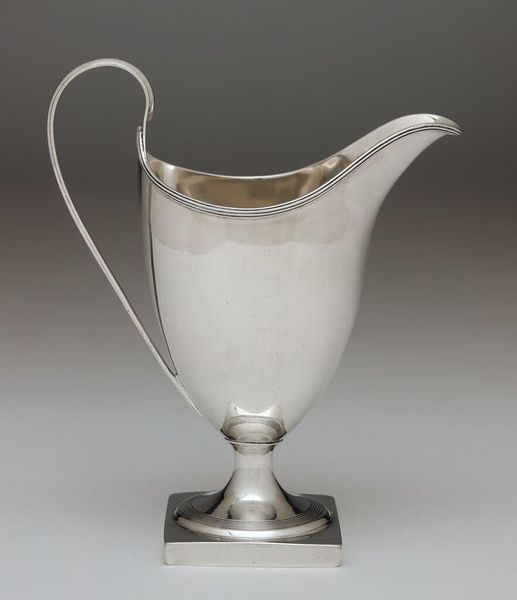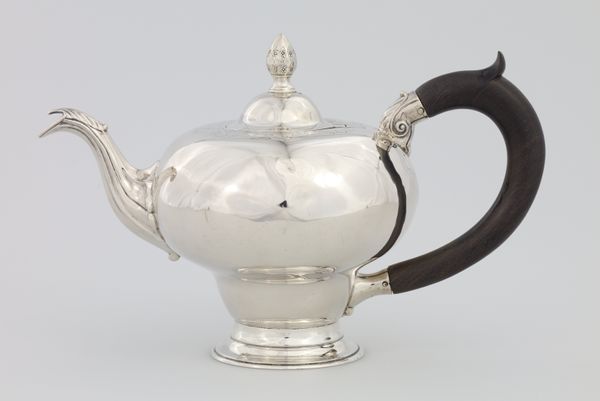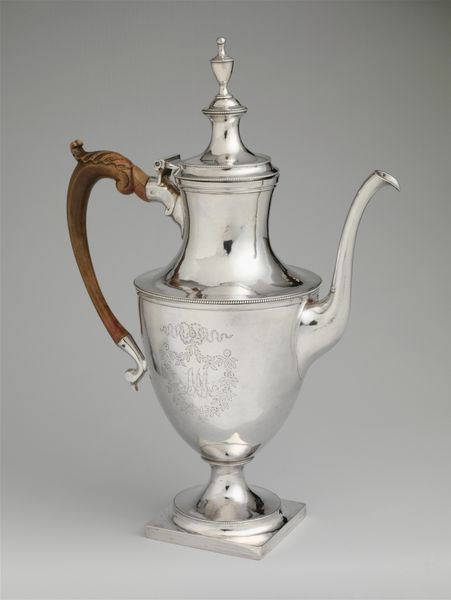
silver, metal, ceramic, ivory
#
silver
#
metal
#
ceramic
#
ceramic
#
united-states
#
ivory
Dimensions: 9 5/8 x 9 1/4 x 4 9/16 in. (24.45 x 23.5 x 11.59 cm)
Copyright: No Copyright - United States
Curator: What strikes you first about this “Coffee Pot,” circa 1914, attributed to Grant Wood? Editor: The sleek, almost austere, lines against that gleam of silver give it such a pristine quality. It looks like an object from a futuristic movie, though clearly from the past. Curator: That tension between a futuristic aesthetic and the older traditions inherent in coffee culture and silversmithing is intriguing. Considering the social context around 1914, this piece might represent aspirations toward a streamlined modernity, even a break from ornate Victorian styles. What can be gleaned from the ceramic and ivory materials? Editor: The eye is definitely drawn along that elegant curve of the spout and handle. The use of ivory disrupts the otherwise seamless metallic surface, providing an intriguing point of contrast at the top and on the handle itself. It underscores the volume and smooth gradient in color and value in an otherwise visually economical design. Curator: Absolutely. Now consider the craftsmanship. The silversmithing, of course, points to certain skilled labor practices. The piece represents not just artistic intention but also the application of traditional skills by anonymous craftspeople, working, potentially, in a factory setting influenced by the assembly-line dynamics taking hold at the time. This was everyday commodity under a specific kind of production in which Wood likely participated as a wage earner in different metal shops. Editor: But do you see how that smooth silver reflects the surrounding space? This enhances its shape; each subtle plane and curve interact, playing with light in very nuanced ways. The ceramic is really simple and that's what adds value to it, isn't it? Curator: It's a powerful statement on how artistry exists at many levels and speaks volumes about the processes of commodification during a time of great change. And ultimately we find ourselves still discussing this beautiful coffee pot, an enduring reminder of how the everyday object speaks to something much larger. Editor: Right, an exquisite example of how functional items can hold artistic merit while encapsulating a unique time. Thank you for bringing forth the art within material constraints!
Comments
minneapolisinstituteofart over 1 year ago
⋮
In 1914, Grant Wood was working at the Kalo Shop, an Arts and Crafts collective known for its fine hand-wrought silver, while attending courses at the Art Institute of Chicago at night. At Kalo he met Kristopher Haga, a Norwegian silversmith, and together they opened the Volund Shop, named for the Norse god of metalsmithing. Wood and Haga produced modest domestic items and jewelry, and occasionally made larger pieces such as this service. They closed Volund within only eighteen months, after which Wood went on to become a celebrated regionalist painter and Haga returned to the Kalo Shop.
Join the conversation
Join millions of artists and users on Artera today and experience the ultimate creative platform.
